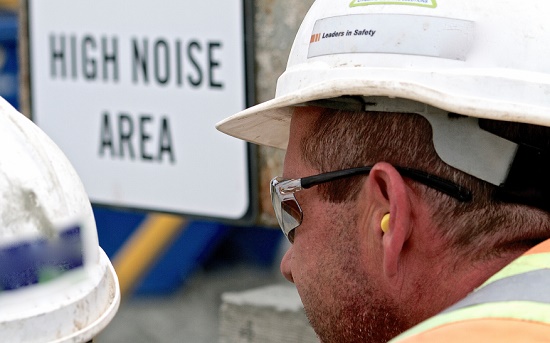
When researching the many factors that go into your career choice, we bet that your long-term hearing health is pretty low on the priority list—if it’s there at all. We get it.
And although we don’t think that your ability to hear in the future should dictate your career choice, we do think you should be conscious of the risk—so that you can utilize proper hearing protection and conform to the best practices to preserve your hearing.
As reported by the CDC, occupational hearing loss is one of the most common occupational health problems in the US. Twenty-two million people are subjected to unsafe noise levels at work, and a projected $242 million is spent annually on worker’s compensation for hearing loss.
So this isn’t a minimal concern; the personal and social consequences are huge.
If you opt to follow one of the following eight careers—or currently work in one—take additional precaution to take care of your hearing.
The following are 8 of the loudest industries.
1. Military – Almost all firearms can deliver 140 decibels (dB) of noise. This is significantly above the safety limit of 85 dB, and has the potential to generate instant and irreversible hearing damage. Explosions and other sounds of warfare add to the risk. This is why hearing loss and other hearing problems represent the most prevalent injuries for veterans.
2. Music – Rock concerts can reach over 110 decibels, exposing musicians to hours of continually harmful noise. That explains why research has revealed that musicians are four times more likely to experience noise-induced hearing loss—and 57 percent more likely to suffer tinnitus—than other people.
3. Manufacturing – As reported by the Bureau of Labor Statistics, hearing loss is the most commonly documented work-related condition in manufacturing. Manufacturing machinery can reach decibel levels of well over 100.
4. Carpentry – Much like manufacturing, carpenters use equipment that can reach damaging decibel levels. A power saw alone can reach 110 dB.
5. Aviation – A jet take-off at 25 meters registers at about 140-150 decibels. The decibel level decreases as distance increases, but aircraft pilots and airport staff should protect against the noise.
6. Emergency Response – Ambulance and fire-engine sirens can produce decibel levels of over 130. In fact, a group of firefighters has recently taken legal action against a siren manufacturer after experiencing hearing loss on the job.
7. Farming – Some tractors and agricultural machinery can produce well over 100 decibels. Farm workers are advised to keep machinery running smoothly, to take regular breaks from the noise, and to wear hearing protection.
8. Racing – The sound of a single race car can reach over 120 decibels, and a race in full action can reach 140. Participants, fans, and workers at racing events are all at risk for developing hearing loss.
Bear in mind, extended subjection to any sound above 85 decibels enhances your risk for acquiring hearing loss. If you find yourself in a high-volume career, take these three safety measures (if you can’t stay away from the source of the noise):
- Increase your distance from the sound source when feasible
- Take regular rest breaks from the sound to limit time of exposure
- Wear custom earplugs to limit volume
Taking these three simple steps (especially # 3) will allow you to pursue the career of your choosing without needing to compromise your ability to hear later in life—because wearing earplugs now beats wearing hearing aids later.